The US and the UK Master’s Part / Chapter-wise Dissertation Writing Service

Then You’ve Certainly Reached the Right place
Human Resource Management in the Health Sector of Ministry of Health (MOH)
Introduction:
The present chapter discusses the result of quantitative analysis collected among HR department employees of Ministry of Health (MOH). An objective of the study is to identify HR capabilities and skills and their level of integration with organizational health strategy. Further, the study also examines challenges faced by HR employees. The questionnaire was designed based on in-depth review to capture different HR practices (organization commitment, training and development, leadership, retention and loyalty and Integration with organization’s strategies). The study targeted an initial sample size of 166 employees, however only 63 responded for the study with a response rate of 38%. Since HR plays an important role in an organization, understanding their challenges helps MOH to develop appropriate HR policies and moreover, in UAE, there is a paucity of studies on this aspect, hence this study would shed light on this phase.
Role of HR Management in MOH
As discussed in previous chapter of Health Sector on UAE, the MOH is a federal authority that represents the northern zone. The HR department falls under the administrative of Assistant undersecretary for Institutional Service and Support. The department plays an important role in the health organization mainly at three levels. The Level 1 represented by Ministry of Health, while level 2 comprised of administrators, hospital employees, physicians, nurses, technicians etc. The final level consists of consumers including patients and the community in general. The Figure 1 shows the functions of HR department.
The HR department can categorize the performers by Performance matrix which enable the department to assess performance strategy for Human capital [9]. Also, the matrix can be a analysis tool to evaluate the organization drivers. Those performers are categorized into superstar, steadies and non player
The premium employee of Performance Matrix is Superstar which comprises 10 – 20% of any organization. This group cans understand what and how the health care should be delivered. They are charismatic leaders which they lead the work and leading the colleagues. They willing to be mentor and educating other. They are dedicating to develop themselves and take the opportunity to increase their skill. Also they are performing outstanding performance because they have:
- - Motivated sprit.
- - Productive sense
- - Commitment
- - Progressive
- - Effective
Steadies are backbone of any organization which comprises 60-70% of the organization. This group meets the job expectations and does their job responsibilities. This group is critical group which it can be affected by negative or positive forces. So if they are influenced by negative forces they will tend t be a nonplayer group. On other hand, they will be motivated if they receive good mentoring and coaching by organization leader or by superstar group. So they can be superstars with proper development programs.
Nonplayers represent about 10-15% of any organization. This segment is a problematic and usually need large amount of corrective attention. They are usually having negative influence on their patient-health providers relationship. They eradicate the positive communication relation with peers and then affect entire organization.
Finally, this segmentation will facilitate the implementation of HR strategies. So it tell how the leaders develop the steadies and increase the contribution of superstars and diminishing the impact of non players.
Source: HR department, MOH, UAE
As discussed in earlier (Section X.X), HR department align with other departments of an organizations to accomplish organization goal. The general functions of HR department include sourcing, recruitment, selection, induction, training and development, evaluation and monitoring, retention, loyalty, and addressing grievances. Further this department also compliant with state and federal laws for employee’s compensation and benefits. Thus, HR department plays a critical role in achieving organization mission and vision.
Quantitative Analysis
This section presents the findings of the analysis represented through various charts and figures. The HR practices examined among employees include organization commitment, training and development, leadership, retention and loyalty and Integration with organization’s strategies. The total sample sizes included for the study are 63 (54, Female and 9, Male). The Table 1 shows the frequency of age group. The findings revealed that about 50% of the employees belong to 31-40 years age group and none of the employees are within the age group of greater than 51 years or less than 20 years old. However, in this study majority of them are female employees representing 86% in total.
The current occupation question was responded by 53 employees (84% response rate) and 23 reported working in recruitment section while 5 in the training and development. The other employees (n=25) worked in various other department including finance and rewards. These findings indicated that there is no standard staffing procedure observed. Further the respondents were requested about their education category. It is observed that majority of the employees belongs to undergraduate (bachelors) degree (44.4%) while 28.5% had attained a minimum level of high school education or even lower, followed by Diploma holders (17.4%). Since, HR professionals play an critical role in implementing and formulating the effective HE practices, employees were questioned about their specialization in their degree. However, none of the employees answered this question and this shows that employees are not recruited based on their specialization.
General HR practices:
The participants were questioned about general HR practices particularly with reference to number of employees of MOH. All 63 employees either could not answer or wrongly answered. Further, they were questioned about whether they are aware of mission, business statements and HR strategy in MOH. Surprisingly, only 63% believed that MOH have mission statement while 41% believed the presence of business strategy. However, almost 44% are not aware of presence of business or mission strategy. In specific to the presence of HR strategy about 53% of participants believed while 47% reported either do not know nor not agreed. Table 3 presents the results of awareness status among employees on strategy statements. The findings clearly indicated that almost 50% of the employees lack clarity on HR strategy at MOH and this may perhaps effect negatively on strategic implementation.
An important question on open discussion was posed to the employees. They were questionnaire on whether organization provides an opportunity to share work debate before any crucial decision (Table 4). The responses obtained were almost neutral where half of the participants (54%) agreed that there is participation in open discussion while other 46% neither disagreed nor not sure.
In regards to the reward system in an organization, 28.5% of them agreed that they have rewards and benefit policy while 43% disagreed with the statement. Further, the participants who reported the presence of reward, they strongly believed that the system is not workable. This shows that the organization has to reconsider their reward policy.
Organization commitment:
The employees were questioned about their level of agreement on organization commitment. Majority of the participants (81%) reported their desire to make extra efforts and bear the burden of work and contribute to the organization success.
Training and development:
The participants were questioned about the training and development programs by HR department and its facilitation in increase in efficiency and chance of promotion. Almost 37% of them agreed that they were exposed to regular training and development programs, while 63% of them provided negative impression about its efficiency and promotional aspects. In regards to HR department willingness to accept the employee’s ideas and creativity, 75% of them agreed that the HR accepts employee’s creativity. The following Table 6 presents the frequency results.
In regards to organization initiatives of work based training program for employees, about 50.7% of participants are not sure while 20.6% disagreed. Thus, almost three fourth of total employees (74%) had negative impression about Work based training program provided to the employees. The findings revealed that there is a wide gap between training and development and employee requirements.
Leadership
The employee and leaders relationship were also assessed. The findings revealed that 67% of the employees agreed that the leaders and their immediate subordinates respect employee’s views while 13% of the participants, disagreed the statement while other 20% are not sure.
The role of leaders in achieving organizations goals and objectives were questioned. The results revealed that more than half the participants (56%) agreed that leaders help in achieving the goals and objectives while 11% disagreed. However, more than 33% of the participants are not sure. The following Table and Figure 9 show the results.
The role of health organization in providing opportunities to raise position leadership was questioned. Almost 70% of them disagreed with the statement and reported that their organization doesn’t encourage employees in terms of career ladder.
Loyalty and retention:
Recently, the UAE health sector undergoes significant mobilization of a staff from Ministry of Health to other sectors which reflect a lack of an appropriate policy system in retaining employees. In regards to the same participants were questioned about whether HR provides sufficient opportunities to the employees in terms of retention. However, 67% of the participants disagreed with the statement including 43% either reported not sure while 24% disagreed. This may perhaps provide a justification on high mobilization rate in health sector of MOH.
The level of manager’s relationship with employees, specifically the role of manager in turnover of employees was questioned. The results revealed that 33% have desired to leave the organization due to manager’s practices while other 33% disagreed with the statement. However, remaining 34% of participants stayed in a gray zone and could not able to decide.
Integration with organization strategy:
In regards to role of HR in aligning employees goals with the organizations goals were questioned among employees. The results are presented in Table 12. The findings revealed that almost 48% of them agreed that the HR department is aligning to engage their employees towards Ministry of Health (organization) strategies. However, few participants disagreed, where 29% are not sure while 23% disagreed with the statement. Further, in regards to methods employed to align employees with organizational goals effectively, 46% of them agreed that the usage of specific method to engage the employees with organizational strategies while at the same time 10% disagreed and 44% are not sure.
The final question posed to the employees with regards to the understanding of organizational strategy by MOH employees. The findings are presented in Table 13. The results showed that 51% of them agreed that they understand the strategies while still 23% of them are not sure and other 13% do not believe. The findings indicated that half of the participants had negative impression. Further almost every employee (90%) recommended a need for engaging organizational strategies formulation and implementation.

Researchers to mentor-We write your Assignments & Dissertation
With our team of researchers & Statisticians - Tutors India guarantees your grade & acceptance!
Our servicesSummary:
The role of HRM practices in aligning organizational goals and objectives was studied among Ministry of Health (MOH) employees. The different HR practices (organization commitment, training and development, leadership, retention and loyalty and Integration with organization’s strategies) on employee satisfaction were examined. The factors are important in identifying employee’s perceptions and role of human Resource Department. The factors that mostly influenced employee satisfaction are organizational commitment, training and development, and leadership skills. However, the factors that affected employee satisfactions are work related training programs, loyalty, integration and organizational strategy, and reward policy. The staffing pattern in HR department lacks homogenous and qualification doesn’t align with the department functions. Overall, findings revealed that there is an imbalance and a gap exists between the employees and HR practices in MOH. The following chapter on discussion provides more review on challenges faced by health sector in UAE.

Full Fledged Academic Writing & Editing services
Original and high-standard Content
Plagiarism free document
Fully referenced with high quality peer reviewed journals & textbooks
On-time delivery
Unlimited Revisions
On call /in-person brainstorming session
More From TutorsIndia
Coursework Index Dissertation Index Dissertation Proposal Research Methodologies Literature Review Manuscript DevelopmentREQUEST REMOVAL



